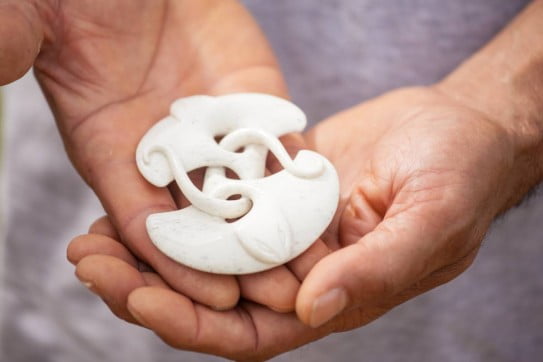Northland's history and culture
This part of New Zealand is steeped in stories. Painted in a palette of blue, green, gold and white, Northland's land and seascapes cast a languid spell that can capture you for days. But just as captivating are the region's historic sites and Māori cultural experiences.
Waitangi Treaty Grounds
Just north of Paihia, Waitangi is one of New Zealand's most important historic sites. It's where the Treaty of Waitangi, New Zealand's founding document, was signed in 1840 between the British Crown and Māori chiefs from around the North Island. The treaty aimed to protect the rights of Māori to keep their land, forests, fisheries and treasures, in exchange for handing over sovereignty to the English.
At Waitangi you can explore the Treaty Grounds to learn about Māori culture and the events associated with the signing of the treaty. You'll discover a replica of the treaty in the Treaty House, an ornately carved Māori meeting house and one of the largest Māori war canoes in New Zealand. A highlight is Te Kōngahu Museum of Waitangi, where exhibits and a fully interactive multimedia display present the history of Waitangi and its significance to all New Zealanders. Four evenings a week between October and April, there's also a traditional hangi (earth oven) feast and Māori cultural performance to enjoy.


Missionaries and mansions
In the pretty colonial village of Russell, the Pompallier Mission and Printery is an absolute must-see. It's where religious writings were translated from Latin to the Māori language, then printed and bound. The printery, which is New Zealand's oldest industrial building, was built using a traditional French rammed-earth style of construction.
Over in the Hokianga, charming Clendon House is your chance to imagine the life of a stylish colonial family. Built in 1860, the house has a wonderful collection of family photographs, postcards and greeting cards.
Te Waimate Mission in Waimate North is New Zealand's second oldest building. It preserves stories and objects connected to missionary, farming and architectural history. It's also full of beautifully-preserved colonial furniture.

Heritage parks and pā sites
Samuel Marsden was the first missionary to set up camp in Northland. He gave his inaugural service at Rangihoua on Christmas Day. Today, the beautiful Marsden Cross marks the spot, which is part of the Rangihoua Heritage Park. The park includes New Zealand's first planned European settlement, where Māori and Europeans began learning each other's ways.
Near Kerikeri is the Kororipo Heritage Park, where you can explore Rewa's Village, a replica Māori fishing settlement, and walk the heritage trail. Highlights include the Stone Store, the oldest stone building in New Zealand; Kemp House, New Zealand's oldest standing European building; and Kororipo Pā, the site of a Māori defensive settlement (fort).
There are many other pa sites to discover in Northland. You'll recognise them by their characteristic terracing and kumara (sweet potato) pits. They're usually located in strategic positions and are similar to defensive sites found throughout central Polynesia. The ultimate pā to visit is Ruapekapeka, the site of a major battle between the British and northern Māori. If you want to find a pā with an incredible view, visit the sites on Motuarohia or Urupukapuka in the Bay of Islands.

Cultural experiences and tours
Throughout Northland, local tribes have put together a fascinating range of tours and experiences for travellers who want to dig deeper into Māori culture.
One of the best is a journey through the Waipoua Forest, where a local Māori guide will introduce you to the largest remaining kauri forest in New Zealand. Another highly-reviewed experience is based in Whangārei. It's a five-hour exploration of traditional Māori life, including food and weaving.